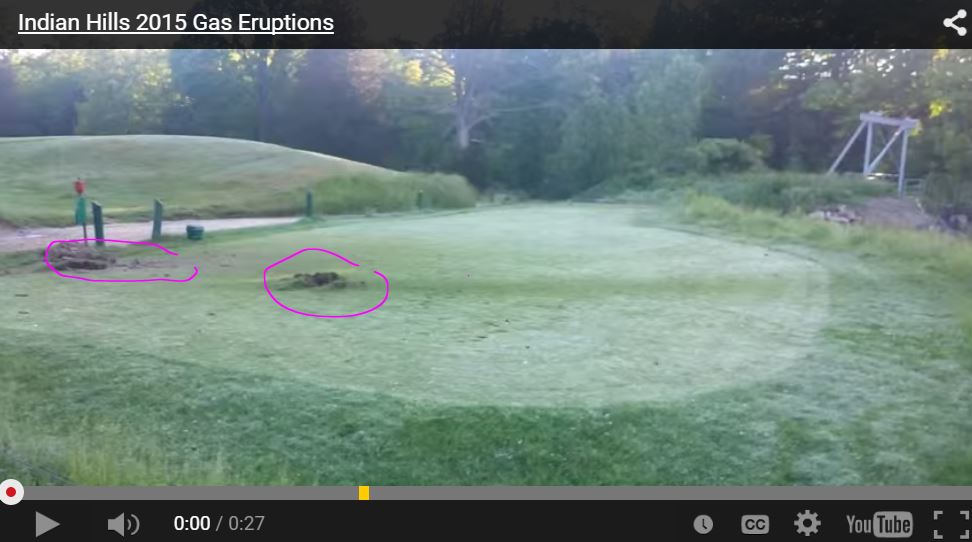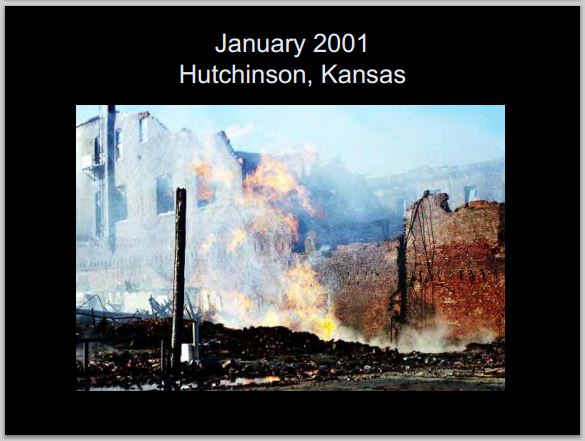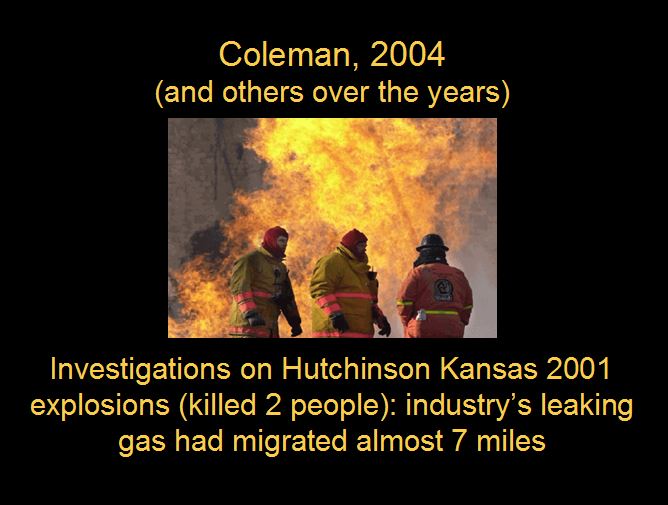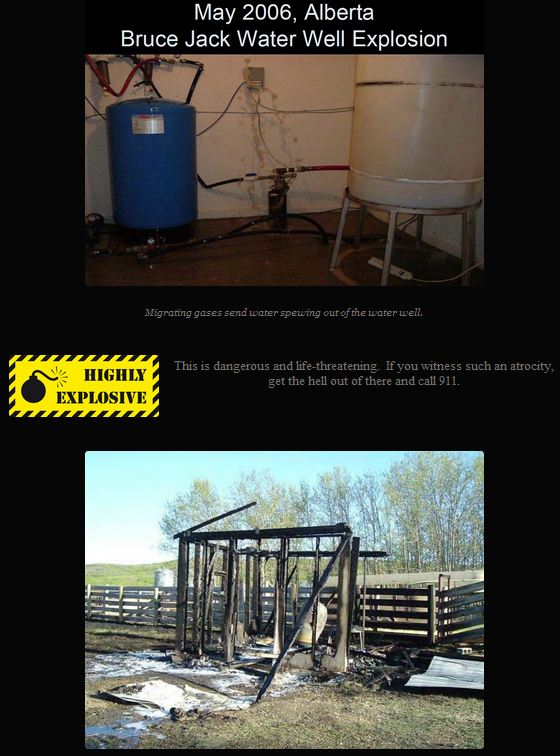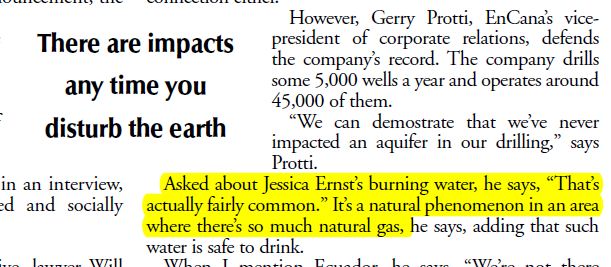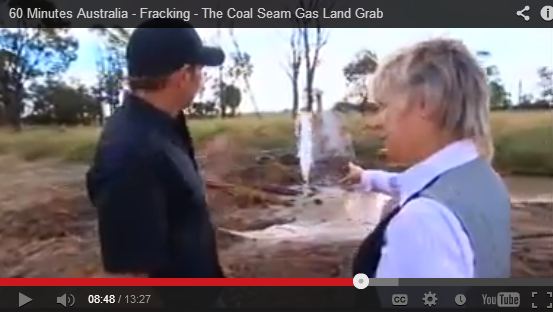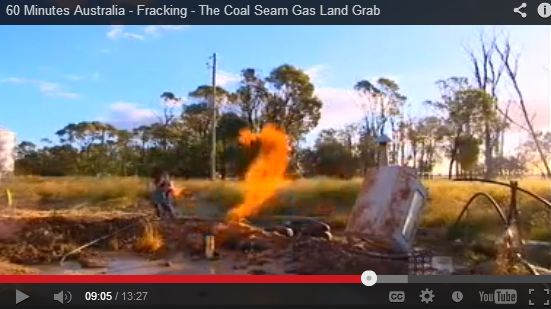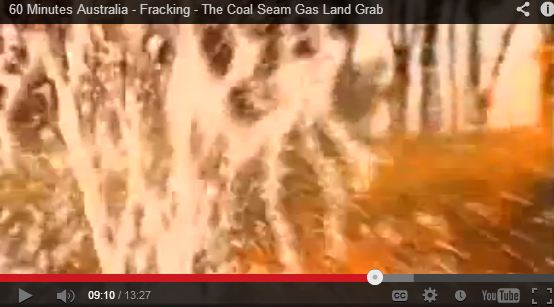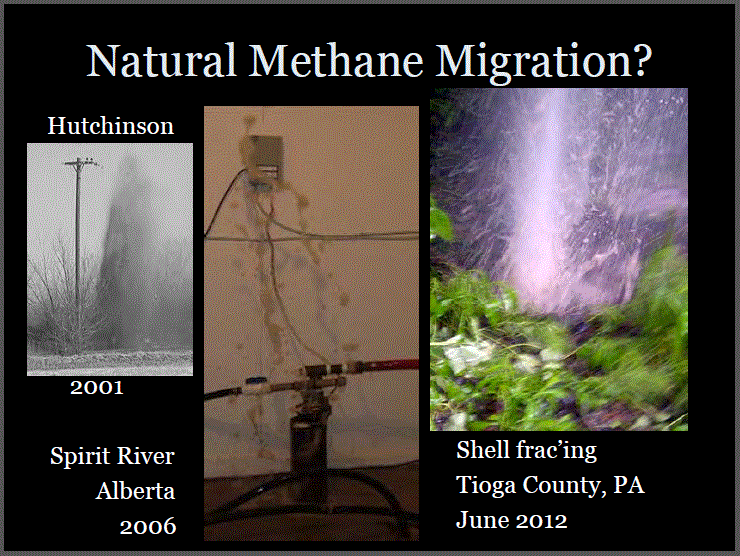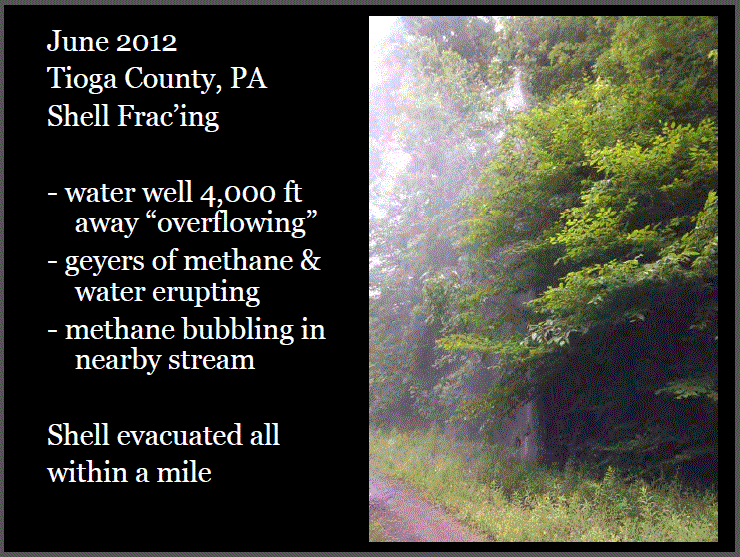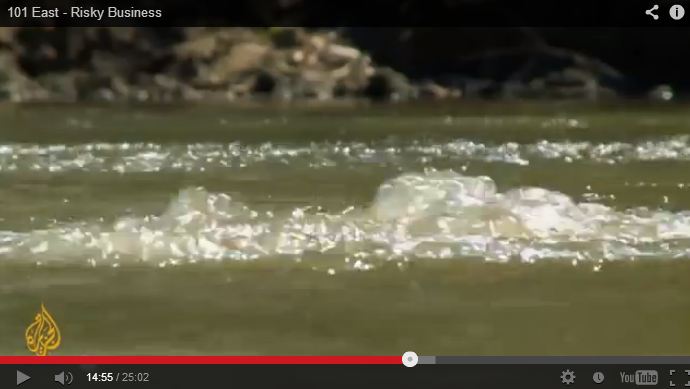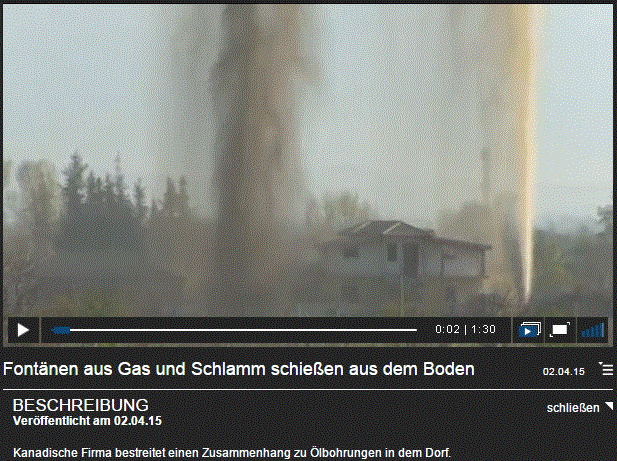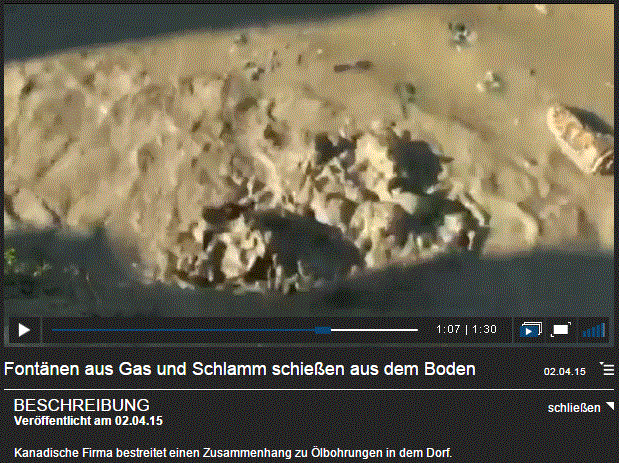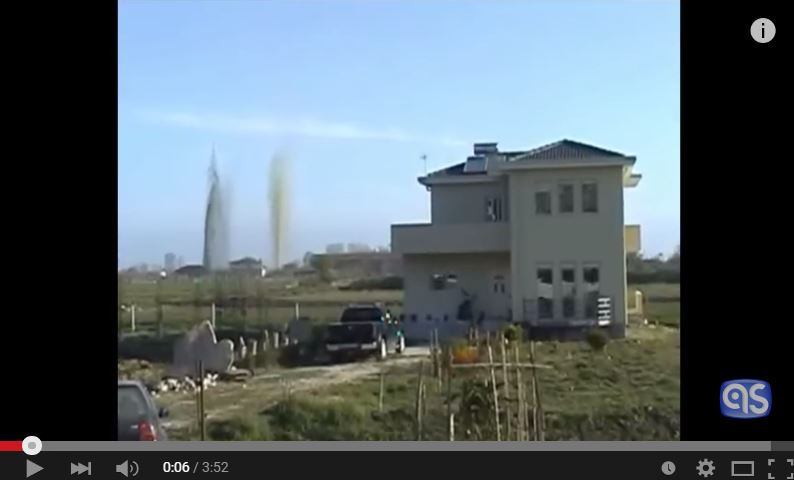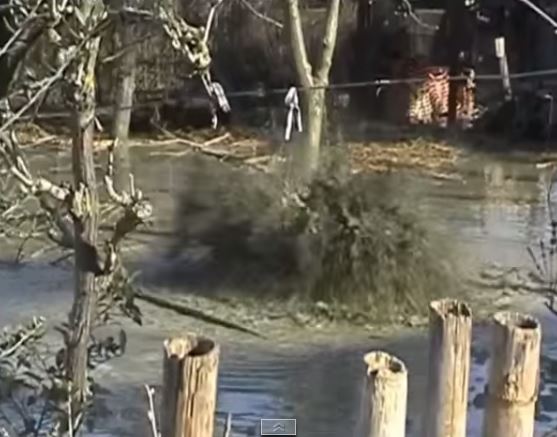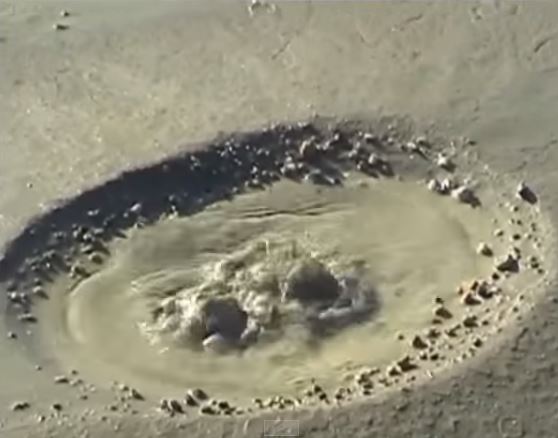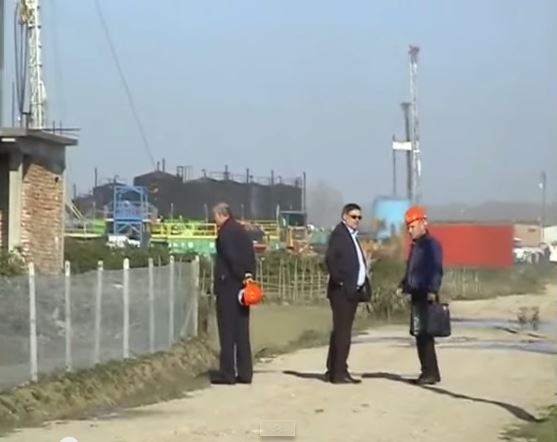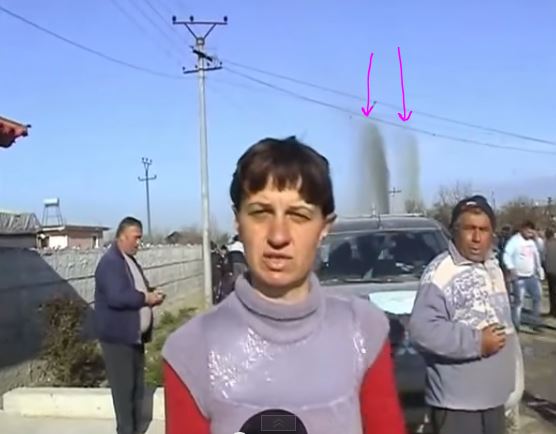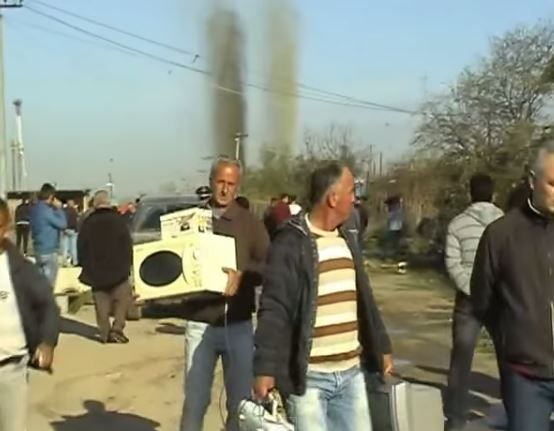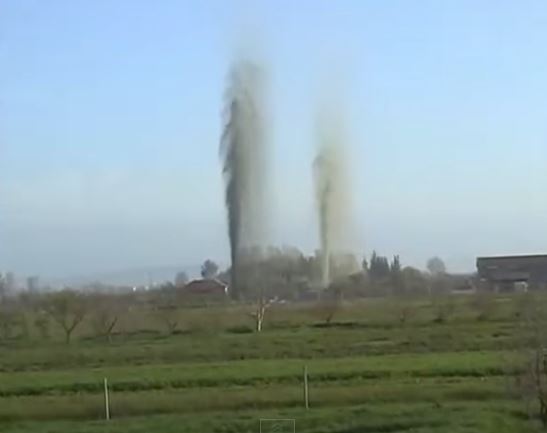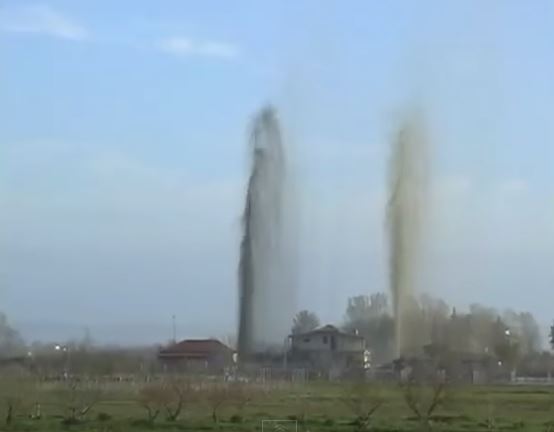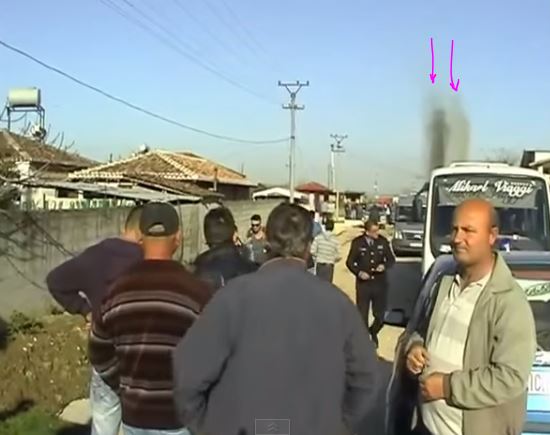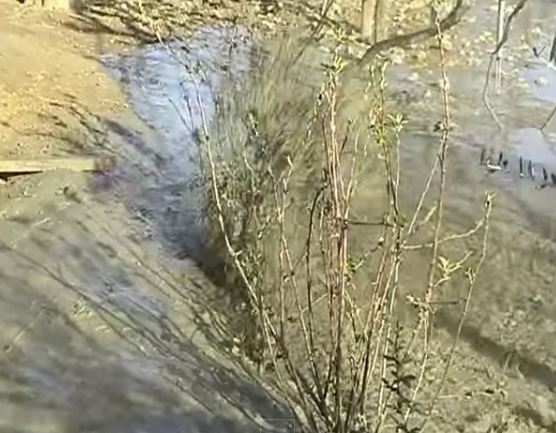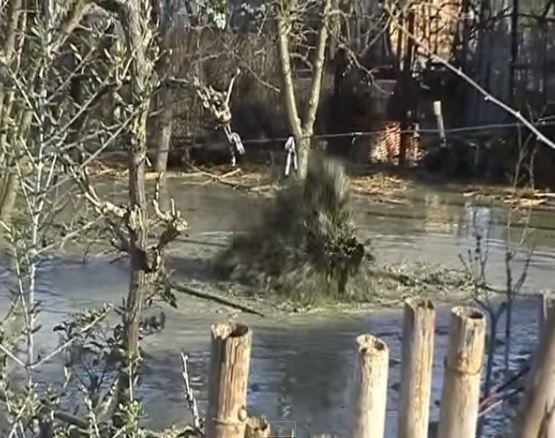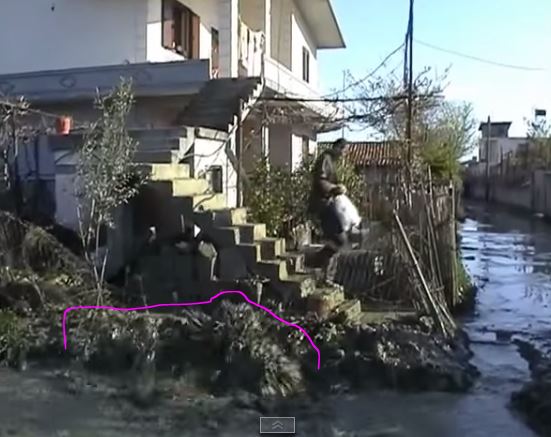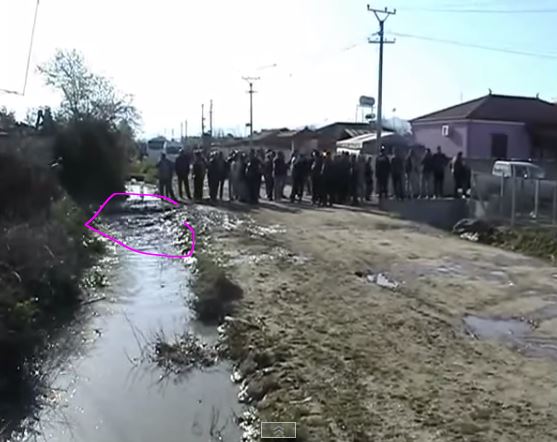Legal matters: Fracking on the golf course by Jenny Yu, Aug ust 15, 2017, The Golf Business Co Uk
This guidance from the National Golf Clubs’ Advisory Association looks at the financial and legal ramifications of allowing a fracking company to mine for energy on land the golf club owns.
…
Why is it controversial?
Critics argue that drilling for shale gas will cause untold environmental damage. Briefly, there are the following environmental concerns: Air pollution may be caused as a result of drilling which could lead to the release of hydrocarbon based chemicals; Pollution could be caused by leaks on the surface through spillage; Groundwater contamination may occur; and there is the possibility of earthquakes, as seen in Blackpool in 2011.
At present, there are unquantifiable economic concerns, such as the effect upon the value of land and property located within a fracking area.
The British Geological Society is the body which is authorised to monitor the environmental impact of fracking.
What rights does the golf club landowner have and what risks are posed?
These are the key issues:
Mineral ownership
Landowners in the US automatically retain ownership of the mineral rights under their land. The position in England and Wales however is very different where ownership of the surface land and the subsurface minerals may have been separated. Many owners of underground property rights are increasingly seeking to register their interests at the Land Registry as their value is becoming more recognised, possibly also with a view to being involved in any potential negotiations with shale gas developers concerning rights of access. Under the current laws and regulations, property rights must be obtained independently of other licences and consents which are required to implement what are known as Petroleum Exploration and Development Licences (PEDLs).
The property rights required to be obtained will vary depending upon the nature of the work. For instance, shale gas extraction will take place above and below the surface and both vertically and horizontally. Therefore, property rights must reach to the subsurface and also horizontally across varying distances.
Access and trespass
The Infrastructure Act 2015 became law on February 12, 2015. Prior to this, any interested fracking company had to either obtain permission from landowners and those holding the rights minerals below the surface or obtain a court order in respect of the compulsory purchase of those rights. The case of Bocardo SA v Star Energy established that a failure to do so, even if there is no damage to property, amounted to an actionable trespass. The consequence of the Bocardo case was that fracking operators required a licence from the secretary of state to carry out any exploration works.
The Infrastructure Act, however, has created new rights of use for the purpose of exploiting petroleum or deep geothermal energy. There is one condition attached to this right, which is that the land must be at least 300 metres below sea level. Section 44(1) states that fracturing is a permitted use.
The act also provides the following:
-
There is no requirement to return the land to its condition prior the works being carried out (including the right to leave any substance and infrastructure in the land) [Industry and the government know full well what’s ahead for property owners, including golf courses. Refer below for a few details.]
…
Contamination
Landowners may be liable for any contamination discovered years down the line resulting from fracking operations which wasn’t actually caused by the landowner. Under Part IIA of the Environmental Protection Act, persons who are classed as ‘knowing permitters’ may be liable for the cost of any remedial works, which could be substantial, even if they did not cause the contamination and didn’t have a choice of whether the works were carried out or not.
Nuisance
Land which neighbours a fracking site may be affected by dust, noise, lights, flaring as well as the visual impact of the site itself. This could become an issue for landowners as neighbouring landowners may have a right of claim against an owner of land where fracking takes place.
Value of land / property
It is considered that the negative impacts of fracking are likely to lead to a reduction in the value of property and rental values on and located close to a fracking site. This should be of particular concern where the land is not returned to its original condition following completion of the drilling.
…
What can a golf club landowner do to protect its position?
1. Commission a desktop search to ascertain whether the land / property is located within an area which may be subject to fracking
2. Ensure that the land / property has a suitable insurance policy in place, which covers earthquake damage, subsidence, flooding, diminution of value, business interruption and contaminated land clean up [What if insurance doesn’t cover any damages from fracking?]
3. If fracking or exploration works are planned then you could consider:
i. Objecting to the grant of planning permission
ii. Applying for an injunction
iii. Consider asserting rights under Article 8 of the European Convention of Human Rights, being the right to respect for private and family life and home (where the land in question includes a property)
4. If after having given full consideration to the application in hand, to consider granting access rights to the fracking operation for the maximum compensation achievable. [#4 is pathetic advice. No amount of compensation comes close to covering the harms caused. Emphasis added]
CONSIDER THE CUMULATIVE IMPACTS HYDRAULIC FRACTURING IS WRECKING ON TENS OF THOUSANDS OF ABANDONED/UNLICENCED/UNREGULATED SHALLOW GAS WELLS LEAKING IN ONTARIO
Indian Hills [Ontario] 2015 Gas Eruptions by Jamie Reitknecht, June 2015
SUBSURFACE INJECTION IN ONTARIO, CANADA by Robert T. Kent, Daniel R. Brown, and Michael E. Bentley, [Date not specified, but most recent reference included in the paper was 1982]
Abstract
Underground injection has been used in Ontario for decades to dispose of brackish waters and brines that are produced from oil and gas
wells. The first injection well for liquid industrial waste was completed near Sarnia in 1958. In the next few years, a number of additional
industrial injection wells were drilled near Sarnia. The majority of the wells were completed in the Detroit River Formation at depths generally
less than 1,000 feet (304m). This area was the site of intensive exploration for gas in the overlying Dundee Formation, and many cabletool
holes had been drilled to the top of the Detroit River Formation early in this century. In the late 1960’s, several events occurred where
industrial waste and/or brine flowed to the land surface through abandoned and inadequately plugged boreholes.
…
Industrial Waste
The first industrial disposal wells in Ontario were completed by Imperial Oil Limited at Sarnia between 1958 and 1960. Five disposal wells and one observation well were drilled on refinery property. In the next few years, a number of additional disposal wells were drilled by other industries in the Sarnia area. Most of the wells were completed in the Detroit River Group of Formations, at depths of 600 to 900 feet (182 to 273m). A total of 18 industrial waste injection wells were operated in the Lambton County area during the period from 1958 to 1974. All but two wells were completed in the Detroit River Group. The other two injected into a leached salt cavern. During the period from 1958 to 1974, over 63,717,330 BBLS (10,131,055 m3) of industrial waste were injected into the Detroit River Group.
…
As of 1980, there were 63 active liquid hydrocarbon storage caverns at Sarnia and three at Windsor. The caverns are developed in the Salina formation and range in size from 40,250 BBLS (6,400 m3) to 1,140,340 BBLS (181,300 m3). Much of the waste brine produced during the creation of storage caverns has been injected into disposal wells. By the end of 1980, 13,926,900 BBLS (2,214,200 m3) of salt cavern storage space had been created in southwestern Ontario (Booth-Horst and Rybansky,
1982). Records show that in the period from 1970 to 1980, over 52 million BBLS (8.3 x 106 m3) of cavern washing brine were injected into ”lost circulation” zones in the Lucas Formation of the Detroit River Group through five wells owned and operated by Cambrian Disposal Limited (COL).
…
Environmental Problems of Waste Injection
In the late 1960’s, several incidents occurred where industrial waste or brine flowed to the land surface through abandoned and inadequately plugged boreholes. In 1966, high-pH phenolic wastes emerged beneath a building on the property of Imperial Oil Enterprises Limited in Sarnia. An old borehole was located and plugged. In 1967, another well on the property of Imperial oil began to flow. The well was found to be
obstructed at a depth of 190 feet and was plugged. In 1967, eleven old wells in Port Huron, Michigan began to flow and were subsequently plugged. Soon afterwards, several other wells began to leak. One sample of the water was analyzed by Michigan authorities and was reported to contain 15 ppm of phenol, 820 ppm of H2s, and a pH of 8.7.
Previous samples of native waters from the Detroit River Group reportedly had not detected phenols or H2S.
The breakout problems were reviewed by the Ministry of Mines and Northern Affairs in 1970, with the assistance of the staff of the Ontario Water Resources Commission. This review resulted in a notice to industry that wells utilizing the Detroit River Group were to be phased out within two years in the area along the St. Clair River, that the volume of waste injected in this area should be voluntarily reduced, that research into alternate methods of disposal should be accelerated, and that Cambrian-age formations should be evaluated as an alternative to the Detroit River Group. Wells completed into high-permeability or “lost circulation” zones in the Detroit River Group in locations to the east of the industrialized area along the St. Clair River were to be allowed to operate under gravity drive on a year-to-year basis, subject to annual review. Since December 31, 1976, only brine has been injected into the Detroit River Group.
…
Oil and Gas
The first commercial oil production in Ontario began at Oil Springs in 1857 (Harkness, 1931). … Many thousands of exploratory holes were drilled in Lambton County in the late 1800’s and early 1900’s in search of oil and gas in the Dundee Formation. Most of the records of wells drilled prior to 1930 no longer exist and the locations and plugging status of most of them are unknown. These artificial penetrations of the confining beds allowed the breakout of injected waste in western Lambton County in the 1960’s. Operators are now required by the Ministry of Natural Resources (MNR) to submit an application for a permit to drill or deepen oil and gas wells and, upon completion of drilling, are required to submit a well history summary card and cuttings samples taken at 10-foot (3 m) intervals. These records have been combined with older data to form a computerized geologic information system known as the Ontario Well Data File. When a well is abandoned, it must be plugged according to MNR regulations.
The primary oil and gas production trends in Ontario can be grouped according to geographical area and productive formation. In the counties north of the eastern part of Lake Erie, and in the lake itself, wells produce gas from shallow Silurian sands. The reefs of the Guelph Formation produce oil and gas along a trend that approximately parallels the shore of Lake Huron. Cambrian sands produce oil and gas from stratigraphic and structural traps found near the zero-isopach trend that parallels the north shore of Lake Erie. Dolomitized zones in deformed Ordovician rocks of the Trenton and Black River groups produce oil and gas in widely scattered locations.
A number of oil reservoirs occur in Devonian rocks in southwestern Ontario. Most of the oil occurs in the Lucas and Dundee Formations. Two of the Devonian oil fields also produce gas. These are the Kipp Field in Kent County and the Plympton-Sarnia Field near Sarnia in Lambton County.
…
Storage Media
Underground space in southwestern Ontario is presently used for recoverable storage of two types. Liquid hydrocarbons are stored in cavities made in salt beds, and natural gas is stored in natural pore space in carbonate rocks and in sandstones. A number of industrial firms store Liquid Petroleum Gas (LPG) and other liquid hydrocarbon products in over 60 caverns in salt in the Sarnia and Windsor areas. The caverns are formed in salt beds of the Salina Formation at a depth of approximately 2,000 ft. (609 m) in the vicinity of Sarnia. Total capacity in 1980 was 13,926,900 BBLS (2,214,200 m3) (Baath-Horst and Rybansky, 1982).
Evaluation of Waste Injection
The environmental implications of disposal of brines to the Detroit River Group of Formations can be determined by subdividing the potential impacts into two classes. The first class consists of those processes that may result in local escape of injected fluid or poor-quality native brines from the disposal formation during the operating life of a well. This may result from failure of the well itself, or failure of the geologic
media to contain the wastes, during the period when fluid pressures in the receiving formation are increased due to injection. The second class of potential concern is the fate of the slug of injected fluid after the well has ceased to operate.
…
Failure Pathways. The route of pressurized fluids from an injection well to a water well consists of several links. The water must first travel through the disposal zone to a point of weakness or conduit in the confining beds such as a fracture or abandoned, unplugged borehole. If a vertical conduit exists through the confining beds and the conduit intersects a high-permeability disposal zone near the injection well, the pressure increase in the conduit may be large enough to cause upward migration of waste or native fluids. (The pressure “front” extends farther from the well than the waste ”front.”) Cross-formational flow can occur if the conduit has an outlet to a permeable stratum with lower hydraulic head. The fluid could also pass through an “intermediate” reservoir by discharging from a conduit into a porous and permeable lens in the confining beds, and then into a second conduit that penetrates the lens. … Unfortunately, the presence or absence of unplugged holes or moderately permeable fractures that penetrate the disposal zone cannot be unambiguously determined from hydraulic well tests and/or detailed geologic mapping.
…
Conclusions
… In most injection wells, shallow freshwater resources are protected from the elevated fluid pressures in the reservoir near the well by intervening low-permeability confining beds. This technique cannot be relied upon in southwestern Ontario due to the large number of undocumented abandoned boreho1es. The use of the Detroit River Group for brine disposal should be restricted to gravity drive, thus those areas where high permeability allows high rates of injection would be the most desirable sites for injection wells.
The suggested regulatory procedure would require more detailed information to be gathered by the applicant than was previously necessary. This would be unnecessary if the applicant agrees to operate at a very low pressure or fluid level that was based on expectation of worst-case conditions. If the applicant desires to operate at the maximum prudent level, he would accept the responsibility for determination of the properties of the disposal zone necessary to properly evaluate the area of endangering influence of his well. An analyst would calculate the radial distribution of several assumed bottom-hole injection pressures and then convert these pressures to fluid levels using the density of the native
formation brines, which would be the fluids most likely to reside in or invade undocumented boreholes. The profiles of fluid levels would be compared to profiles of freshwater heads to determine the size of the “critical area” or “area of endangering influence” that would occur at different operating bottom-hole pressures at different times, initially assuming a reservoir of infinite size. The Ministry could then choose a maximum operating bottom-hole pressure based on the area of endangering influence that appeared to present an acceptable level of risk. It is expected that due to the presence of undocumented boreholes in unknown locations, the area chosen should probably be restricted to a size which could be effectively monitored using wells installed in the freshwater aquifer.
Operators of disposal wells could monitor either operating fluid levels or operating bottom-hole pressure, but it would be to their advantage to monitor the latter. Since the hydraulic analysis would be based on bottom-hole pressures, the pressure stipulated by MOE would have to be converted to a water level using worst-case fluid density (salt-saturated brine, specific gravity = 1.2) in order to prevent exceeding the allowable pressure when using water-level criteria when this type of brine was injected. The operator would not be able to inject at the maximum allowable
bottom-hole pressure if low density fluid were injected at an operating level based on saturated brine. [Emphasis added]
1999 OIL AND GAS EXPLORATION, PRODUCTION AND LEGISLATION ON ONTARIO FARMS by Petroleum Resources Centre (Ministry of Natural Resources)
In the resulting rush of fortune-seekers, thousands of wells were drilled. As many as 50,000 wells may have been drilled in Ontario, although records are available for only 20,000.
… In some areas of the Niagara Peninsula, especially the southern portions of the regional Municipalities of Haldimand-Norfolk and Niagara, the probability of finding natural gas is known to be quite high. In these areas some landowners have drilled their own gas wells or have taken over ownership and operation of commercial gas wells that are no longer economically viable. These owner-operators are responsible to properly plug the wells when gas is no longer being produced, and to ensure compliance with applicable government regulations and standards.
… Properly plugged and abandoned wells do not pose a hazard to non-structural uses of the land surface. However it is recommended [why voluntary for something so deadly?] that buildings not be constructed directly over a plugged well without undertaking further technical evaluations. [Emphasis added]
2010: Alberta firm eyes Ontario’s untapped shale gas
Calgary-based Mooncor Oil & Gas Corp. wants to develop a resource in Ontario that has been largely overlooked by its rivals: shale gas. … It has already locked up nearly 23,000 acres (9.30776 hecatres) of land in Lambton and Kent counties and is preparing to spin off a separate company called DRGN Resources that will focus its efforts on both conventional and unconventional gas drilling. … What about Ontario’s own shale resources? “The question obviously comes up,” said Terry Carter, petroleum resources geologist with Ontario’s Ministry of Natural Resources. … Carter said the Marcellus zone doesn’t offer much in Ontario. “Almost all of it is beneath Lake Erie,” he said. “Kettle Point and Blue Mountain would appear to have better potential.” Both have what Carter described as biogenic gas, created when bacteria in fresh water come in contact with organic-rich bedrock. The bacteria eat the organic material and produce methane. “The natural gas is being produced in real time, just like in a landfill site,” [ “Naturally occurring” natural gas ]
2011 08 02: Ontario: The heat is on private gas well owners by Matthew Van Dongen, Hamilton Spectator

Thomas with his gas well on the front lawn of his Binbrook home. The province has ordered it shut down. – John Rennison/The Hamilton Spectator
Until now, the hidden cash crop always paid off for the Thomas family. The Binbrook farmers have harvested pockets of natural gas buried 40 storeys below their more traditional field crops for more than half-a-century.
Free heat with more than 60 years of fluctuating oil and power prices.
In 1952, when the late Harold Thomas drilled deep to hit the methane jackpot, the natural gas well was capable of heating all the buildings on the 80-acre family farm — and a couple of neighbouring houses, too.
Son Wayne Thomas and his wife, Susan, easily heat their water and 2,600-square-foot home today, even as gas levels drop.
“It’s been pretty handy,” said Thomas, chuckling a bit at his own understatement. “I guess we’ve saved some money.”
Next month, however, the couple will pay a hefty price for their historical free ride.
The province has ordered the family to plug the 146-metre-deep well because it’s too close to a traffic circle and subdivision that sprouted on parcels of the former family farm, which Thomas sold off just a few years ago.
Thomas tried to compromise, offering to build a protective fence around the weathered metal wellhead and pressure gauge jutting out of his front lawn, just one long step from the sidewalk.
“We fought it, but we didn’t win,” he said. “My main issue is I’m on the hook for $20,000 to shut it down.”
A permanent plug may be the fate of thousands of old — and often unlicensed — private natural gas wells still in use across southwestern Ontario, from the shores of Lake Erie as far north as Binbrook.
The province is developing a new set of criteria to license those historic, unregulated wells, said Jennifer Dunlap, a senior policy adviser with the Ministry of Natural Resources.
But those that don’t meet the updated safety standards will likely need to be plugged.
It’s hard to say exactly how many private natural gas wells are operating in the Hamilton area. The Ontario Oil, Gas and Salt Resource Library has a historical list of more than 150 natural gas wells just in Binbrook. Dunlap said that tally likely only scratches the surface.
She said the ministry suspects at least 1,000 unlicensed, operating wells exist in southwestern Ontario — not to mention another 2,000 “abandoned on the landscape” without proper decommissioning.
… But the oldest natural gas wells often lack a cement casing to stop leaks, Dunlap said.
Some historic wells are probably closer to roads, property lines and watercourses than allowed under modern legislation, too.
The proposed policy document outlines the fears behind the enforcement: possible gas leaks, water pollution and even well “blowouts.”
The ministry has no record of a private natural gas well ever exploding in Ontario, said spokeswoman Jolanta Kowalski.
But it has documented cases of mechanical failures — for example, broken pressure regulators — that contributed to gas leaks or fires within homes using private wells, she said.
A draft of the proposed new licensing policy is posted at the provincial Environmental Registry website, but it isn’t finalized yet, Dunlap said. Ministry staffers are still sifting through the results of a public comment period that ended earlier this month.
Many unlicensed well owners were afraid to comment, said Brian Heaslip, an organizer with the Private Natural Gas Well Association.
“We need to find out a way to license these wells without criminalizing these people,” said Heaslip, who said the association formed in part to give a voice to landowners wary of prosecution.
The association is also seeking “a little common sense” when it comes to enforcing new regulations on old infrastructure.
Modern site requirements could easily turn a licensing process into a “mass shutdown” of old, but otherwise safe, functioning wells, Heaslip said.
He suggested most owners of operating wells “wouldn’t mind spending some money to bring them up to date.”
But the cost of plugging a well can range from $2,500 to tens of thousands of dollars.
That kind of price tag — without government aid — will drive well owners underground, Heaslip said.
“What do you do in that situation? Maybe you hide your well,” he said.
Both he and Kowalski agreed that scenario could blow up in everybody’s face.
Owners of unlicensed wells sometimes avoid bringing in experts to maintain aging wells and gas lines, Kowalski said.
“We don’t want you to keep it quiet if something goes wrong,” she said.
Heaslip hopes the final draft of the provincial proposal will give owners a “comfort level” to voluntarily license their natural gas wells.
The draft policy states the ministry will “examine” potential financial assistance programs to help plug unsafe wells, but no other details are included.
Thomas didn’t hide his well, but he never advertised its existence, either.
His wife suspects a careless driver inadvertently outed the family two years ago, careering out of the new traffic circle and onto the family’s lawn, narrowly missing the wellhead. A few months later, a provincial inspector came knocking.
“It’s just bad luck, I guess,” he said. “We think it’s safe, but I have to plug it on my own dime … It’s upsetting.” [Emphasis added]
2012: Shale gas by Natural Resources Canada
At what depth is hydraulic fracturing carried out? The depth of shale deposits varies enormously. For example, in the St. Lawrence Lowlands, the Utica Shale is present at depths ranging from 500 m (in the west) to more than 3000 m (in the east). In general, economic production occurs where shale is deeply buried (between 1 and 3 km), because in situ high-pressured rocks are needed to help with gas movement in the subsurface.
Hydraulic fracturing is permitted only well below the deepest freshwater aquifers. [Why is NRC lying about something as important as Canada’s drinking water aquifers? Not only are companies, notably Encana, fracking directly into freshwater aquifers, they are fracking into shallow drinking water aquifers]
Geology of shale gas in North America Shale gas represents a growing segment of natural gas production in North America. The rapid increase in this type of unconventional gas production is accompanied by exploration projects in a growing number of sedimentary basins in the United States and Canada. For example, various stages of shale gas exploration activities are underway in British Columbia, Alberta, Saskatchewan, Manitoba, Ontario, Quebec, New Brunswick and Nova Scotia. …
Key facts … The natural gas is either of deep, thermogenic origin (derived from the thermal transformation of liquid hydrocarbons on burial) or of shallow biogenic origin (derived from the near-surface decay of organic material by bacteria). [Emphasis added]
2014 02 08: Ontario: Wikwemikong caps leaking century old oil well by Michael Erskine, manitoulan.ca
WIKWEMIKONG—King’s Day, the Epiphany, comes at the end of the 12 Days of Christmas and has long been celebrated in Wikwemikong, but this year the community had another special reason for celebration as January 6 was the beginning of the end for two leaking oil wells that have been troubling the community for neigh onto a century—leaving only 50 or 60 wells left to go.
The community gathered in the community centre for a morning pipe ceremony to the youthful delivery of an opening song performed on the hand drum and sung by five-year-old Pahquis Trudeau, followed by presentations by Chief Duke Peltier and resources coordinator Stitch Manitowabi, and comments by Algoma-Manitoulin-Kapuskasing MP Carol Hughes and Councillor Erronal Gray of the Indian Resource Council (IRC). The IRC is an advocacy organization of oil-producing First Nations communities and assists those communities in dealing with issues regarding oil and gas resources.
Ms. Hughes’ remarks centred on the need to ensure that the federal government should continue to fund the proper capping and rehabilitation of all oil and gas wells abandoned on First Nation territories under the government’s watch.
The IRC representative outlined the process that would be undertaken to cap the two wells whose rehabilitation is to be funded by the federal government.
“These wells are not only going to be capped and properly sealed, the land around them will be rehabilitated,” said Chief Peltier. An important factor considering in some cases the wells have been in place for almost a century.
Following the presentations and a community feast, the assembly travelled to the site of one of the leaking oil wells for a ground breaking ceremony.
One of the two wells slated for rehab already has a service rig onsite, just awaiting a final permit from the federal government to begin work. The other pipe will require a lot more finesse, as it lies between two existing homes and has a nearby power line to complicate matters.
Eastern Oil Field Services, the successful contractor that bid to complete the work on the leaking wells, highlighted the process.
In the case of the first well, the existing failing plug (concrete and sometimes including a cedar plug) will be removed and the pipe cleared of any oil and water. A new, more advanced concrete plug will then be poured and cured in the pipe. The concrete in the new plug is specially formulated to resist corrosion from sulfur, even though the company said it was not anticipating that being a problem at these sites.
The pipe will then be cut at least six feet from the top and welded shut, then the ground regraded following soil testing to determine the level of contamination.
Number two well will require shielding of some sort be put in place to prevent the 40-plus foot service rig from coming into contact with the 30-foot high hydro wires.
The GPS locations of the wells will be recorded for future reference.
Although finally having these two wells properly capped and dealt with is a cause for celebration, Chief Peltier noted that there are still far too many leaking and suspect wells in the community.
“There is another leaking well just 200 metres away from the one that is leaking between the two houses,” he said. “There are a lot more that need to be done, this is just the beginning of this journey.”
Chief Peltier said that his community is being given the story by the government that there is only so much money available for this work each year, but he said he isn’t buying into that.
“I don’t think you can place an artificial cost on the environment,” he said, “or the health of the community. We don’t know if it has entered the water system.”
Golder Associates has been hired to conduct oil sampling to determine the extent of the contamination from the wells. [Emphasis added]
2014 02 14: Leaking gas well one of many in Ontario by Eric Bunnell, Post Media Network in St Thomas Times Journal
An old natural gas well in Bayham that is leaking water laced with potentially dangerous hydrogen sulphide gas, is just one of countless similar abandoned and forgotten oil and gas wells throughout southwestern Ontario.
They pose a threat to public safety and to the environment.
An Ontario Ministry of Natural Resources spokesman wasn’t immediately available but the MNR says on its website that “tens of thousands of wells” were drilled in the 100 years before modern-day regulation over design and decommissioning began almost a half-century ago.
And records for many are incomplete or non-existent. In fact, landowners, themselves, may not know they exist.
… Bayham said in a notice posted Thursday evening to its website at bayham.on.ca that the well is emitting sulphur water that contains hydrogen sulfide gas, prompting several complaints of its characteristic odour near Port Burwell and Vienna.
The gas is heavier than air and if it collects in sufficient concentration, it is potentially deadly.
Volunteer firefighters are monitoring gas levels. [Emphasis added]
2015 03 31: Ivy Business Review (IVB) with Union Gas (Steve):
IBR: Given discussion on fracking, and the dangers of pumping fluids back into the earth, is this a safe practice?
Steve sBaker [President Union Gas; graduate U Waterloo]: Underground natural gas storage is very safe. Union Gas has been storing natural gas this way for over 50 years. Our storage is all naturally occurring, and we’re simply putting gas back where it was originally stored for millions of years. All of the storage pools we operate have a very thick and strong cap rock on the top of the reservoir. [But, Companies are fracing the caprock in Ontario just like they are in Saskatchewan and Alberta!] We monitor the storage wells to ensure we don’t overpressure a pool and damage the reservoir, pressurizing it to a maximum of approximately 70% of historical pressure levels. That gives us the confidence that we can manage that pool and maintain integrity.
***
State of emergency over for golf course with gas leak by Chris O’Gorman, June 30, 2015, Sarnia Observer
Municipal officials with Lambton Shores have called off the localized state of emergency for the Indian Hills Golf Course, where natural gas geysered and now bubbles out of a creek.
The gas leak was determined to be naturally occurring last week by environmental consultants from Pollutech, a Sarnia firm hired by the Kettle and Stony Point First Nation, the group who owns the golf course.
Doug Cook, the town’s deputy mayor, said the “naturally occurring gases have substantially decreased and the situation is being managed in a localized area on the golf course” in a press release Monday.
“There is no longer any indication of a continuing threat to the public, the local economy or municipal infrastructure,” he said. “The golf course will remain closed to the public while geological data is being collected and assessed.” [While the oil and gas industry wells, abandoned wells and related impacts nearby are ignored?]
The municipality declared the localized state of emergency for the golf course and surrounding subdivision on June 17 after geysers of natural gas blew out of a creek. The state of emergency’s area later shrunk to just the golf course where it remained until Monday.
The Municipal Emergency Control Group, a collection of municipal and First Nation officials, the consultants, and representatives from the provincial Ministry of Natural Resources and Ministry of the Environment, met on Monday, according to the release.
“There has been sufficient information provided to the Municipality to cancel the emergency declaration,” Cook said. “Air and water quality monitoring and subsurface investigation in the localized area are ongoing.”
The consultants are now looking at seismic data for the area to determine was caused the natural gas leak.
A Ministry of Environment review of the area found no possible man-made pollutants that could be the source of the methane gas leaking out of the creek. The review ruled out the only possible source, a nearby sewage treatment plant, early on, according to Kate Jordan, a ministry spokesperson.
Union Gas responded to the leak initially, but found no pipelines in the area.
A maintenance program has started to help repair some of the golf course’s greens and fairways, except in the affected area, Cook said in the release, with the intention of re-opening the course “as soon as possible.”
Besides the initial gas eruption there are “golf holes,” according to the First Nation’s manager, Lorraine George. These mini eruptions, some substantial, but most the size of a golf ball, dot across several greens on the course. [Emphasis added]
Analysis confirms gas leak at Lambton Shores golf course is naturally occurring by Chris O’Gorman, June 25, 2015, Sarnia Observer
An analysis of the geysers of gas that continue to burst from a Lambton Shores golf course’s creek has determined that the situation is not the result of human pollutants, but rather a natural phenomenon.
The amount of gas subsided substantially after the initial eruption last Wednesday, but has since plateaued and continues to bubble.
“What we’re hearing from the experts is that it’s still about the same as it was on Friday (June 19). It hasn’t changed much at all,” said Doug Cook, deputy mayor of Lambton Shores.
“At this point there is not a definite way (to stop the leak). These experts don’t have any solutions to it right now. It’s a wait and see at this point.”
The localized state of emergency that the municipality declared for the Indian Hills Golf Club remains in effect, Cook added. The golf course remains closed until further notice.
Since the golf course is owned by the Kettle and Stony Point First Nation, it is up to them to hire and pay for environmental consultants to determine the cause of the gas leak. The First Nation purchased the course in 2006 and had hoped to make it part of the reserve by 2016.
Lorraine George, the First Nation’s manager and chief executive officer, said these consultants have determined air quality beyond the initial “hot spot” at the golf course is good and any traces of metals and gas in the water has since subsided, though hasn’t been totally eliminated.
There is currently no risk to public safety, she said. [Really? Light a cigarette by one of the geysers, or start a golf cart]
The two hired consultants from Sarnia environmental firm Pollutech meet “almost daily” with the Municipal Emergency Control Group, George said. The group includes officials from the First Nation and Lambton Shores as well as representatives from the provincial Ministry of the Environment and Ministry of Natural Resources.
Meetings often run late into the evening and occur on weekends as new issues arise. George said, “It’s been an excellent process” in that sense.
In addition to ongoing air and water testing, the contracted environmental workers began reviewing seismic readings for the area on Wednesday [June 24th] in the hopes of determining the gas leak’s cause. [Industry, government and the mayor already proclaimed on June 19, that nature was to blame. Were they lying right off the bat? Just like Alberta Environment, Encana and AER lied in Alberta in 2005 when Ernst’s water hit the front page of the Edmonton Journal, and still lie?]
“We don’t know what’s going on under the ground. Until we know that, we don’t know what the long-term solution is,” George said. [If all the government officials and “experts” don’t know what’s going on, how can they know nature caused the eruptions?]
Union Gas responded to the leak last week and quickly determined that there were no pipelines in the area, so the leak must be coming from somewhere else.
A Ministry of Environment review of the area found no possible man-made pollutants that could be the source of the methane gas leaking out of the creek. [Where they ordered to ignore all oil and gas industry wells, operating and abandoned, and all gas storage facilities? The area is riddled with man-made pollutant sources!] The review ruled out the only possible source, a nearby sewage treatment plant, early on, according to Kate Jordan, a ministry spokesperson. [Another fraudulent cover- up, deflecting the public’s concern to sewage?]
Naturally occurring gas leaks that slowly seep or bubble out of the ground are not uncommon, according to Maurice Dusseault, a professor of engineering geology with the University of Waterloo’s department of Earth and Environmental Sciences.
Since the gas is invisible, he said, it is only noticeable if it bubbles out of water. [The ruptures (circled in pink) through the green are extremely noticeable]
A naturally occurring gas leak geysering out of a creek, however, is very unlikely.
“My natural proclivity would be human-sourced,” he said. “But a naturally occurring natural gas emission suddenly like that? Very, very rare.”
While the initial ministry review of the area did not reveal any old oil wells, [Regulators in Ontario conduct fraudulent investigations like AER and Alberta Environment: Immediately blame nature or humans via cattle, E. coli or sewage and ignore the most deadly and obvious source: the oil and gas industry.] Dusseault said these may be the likely culprit, though he couldn’t say for sure without reviewing the scientific data.
“There’s been all kinds of energy wells punched down over the years in Ontario and they don’t even know where they all are,” he said. “Many of these wells are improperly sealed by today’s standards.”
A spokesperson for Union Gas, an interview last week, said she was only aware of one other naturally occurring natural gas leak in Ontario over the last 15 years.
The golf course has experienced more than a loss of business. Besides the initial eruption there are “golf holes” George said. These mini eruptions, some substantial, most the size of a golf ball, dot across several greens on the course.
For now the First Nation has assumed the cost of the consultants and is looking into making an insurance claim for the hiring and golf course reconstruction costs.
[HOW DOES ONE REPAIR FRAC’D AQUIFERS? A FRAC’D GOLF COURSE? A FRAC’D GAS STORAGE FACILITY?
HOW DOES ONE FIND AND REPAIR 30,000 UNDOCUMENTED, ABANDONED, LIKELY LEAKING OIL AND GAS WELLS IF NO ONE KNOWS WHERE THEY ARE?]
“We don’t only need to figure out why it happened but also if there is the potential for it to re-occur,” George said. [Emphasis added]
Natural gas flow slows but localized state of emergency remains in Lambton Shores by Chris O’Gorman, June 19, 2015, Sarnia Observer
Emergency responders along with Union Gas crews and a spill action team from the Ministry of Natural Resources attended a natural gas leak in Lambton Shores Wednesday after reports of a odour were noted. Lambton OPP say the gas leak was a natural event and were asking members of the public to stay away from the area near Lakeshore Road, just east of Indian Hills Trail in West Lambton Shores.
Natural gas continues to spew onto a golf course in Lambton Shores, though in lesser amounts, municipal officials said Friday.
The localized state of emergency for the Indian Hills Golf Course on Lakeshore Avenue remains in effect, said deputy mayor Doug Cook, who emphasized that the gas leak continues to pose no health risks to the public. “Progress is being made, but as a precaution, the state of emergency remains in effect until further notice,” he said.
The Municipal Emergency Control Group — a collection of town officials, representatives from the Kettle and Stony Point First Nation, provincial environment monitoring teams, and hired experts — met Friday to discuss next steps. …
There are no natural gas pipelines in the area, Union Gas confirmed, and the only other man-made source of methane gas—a sewage treatment plant—has been ruled out by an Ontario Ministry of Environment review.
[Fraudulent Investigation Check:
Why would the Ministry’s “review” exclude the many oil and gas wells and facilities in the area, especially the abandoned energy well?
Another frac cover-up?
Refer to the map below of the many known industry wells near the Indian Hills methane geysers:
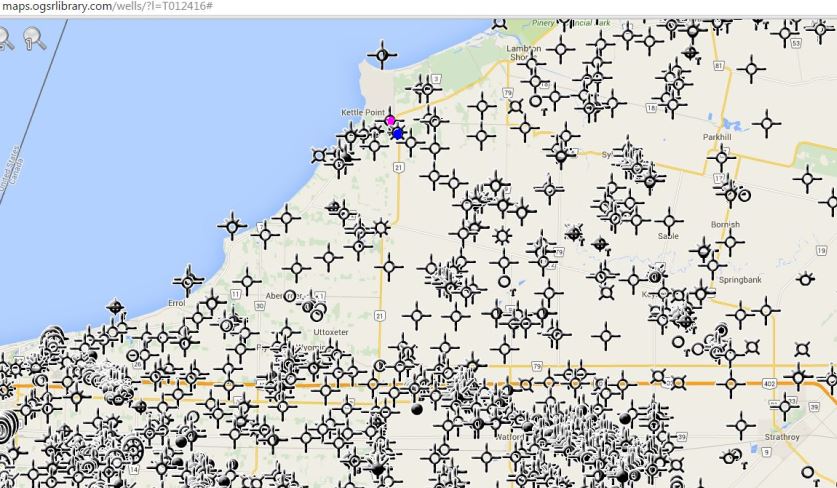
Click to view Legend. The pink shows an abandoned energy well near the geysers, the blue is an active industry gas well that might have been frac’d or refrac’d
End Fraudulent Investigation Check]
As such, the best guess is the gas leak is naturally occurring.
[Oil Patch Fraudulent Cover-up Science Check:
Like how CAPP’s David Pryce testified it’s done to Parliamentary Committee, May 8 2007?
“If [natural gas] is present, the presumption is that it’s naturally occurring….”
And leave out the most likely cause of the problem and guess or presume nature did it.
Where are the isotopic fingerprints of the gases?
What gases are causing this eruption? Methane, ethane, propane, butane, pentane?
Deadly H2S?
Has industry soured formations in the Indian Hills Golf Course area, as it’s done elsewhere in Ontario, and is doing globally?
End Oil Patch Fraudulent Cover-up Science Check ]
If this is the case, it is a very uncommon event because natural gas is usually found deep in the ground. [Not true. By regulator and industry data, many companies are frac’ing super shallow biogenic natural gas in Canada] There has only been one case in the last 15 years of a naturally occurring gas leak within the area that Union Gas services, Andrea Stass, the utility’s manager of media relations, said Thursday.
But at this point, the cause of the bubbling gas pond has yet to be officially determined. The Kettle and Stony Point First Nation hired a consultant to find the cause of the leak. The First Nation added a second expert, a geologist, on Friday, Cook said, and all parties are working in “conjunction and cooperatively.”
“The gases that continue to be released from the ground are at a reduced level. So it’s not the same geyser people saw in the videos,” he added, but couldn’t say if this meant the gas would subside anytime soon.
Indian Hills Golf Course will remain closed through next week, the business said in a statement. Access to Indian Hills Trail West is also still restricted. [Emphasis added]
Bizarre scene on Canadian golf course leads to evacuation by Leeanna McLean, Digital Reporter, June 18, 2015, The Weather Network
Emergency crews responded to a call after being notified of a gaseous odour around 7:50 a.m. ET on Wednesday. There are no pipelines in the area, Andrea Stass, Union Gas spokesperson confirmed with Blackburn News, meaning the blast occurred naturally through a methane gas pocket. [Emphasis added]
Watch VIDEO at Link: Natural gas geyser at golf course south of Grand Bend by CTV News Kitchener, June 18, 2015
A rare gas geyser has put two municipalities under a state of emergency.
Gassy water is bubbling up at a golf course southwest of Grand Bend and people in Lambton Shores and Chippewas of Kettle and Stony Point First Nations are being told to stay away. Lambton Shores’ Deputy Mayor says they’re monitoring air and water quality and so far there has been no impact to residents. Union gas says it has no pipelines within two kilometres of the golf course. However, two years ago, investigators believe a drilling error caused the bubbling near Rome’s airport. The golf course will be closed for at least a week as officials investigate
Gas bubbles out of Ont. golf course pond by Post Media, June 17, 2015, Toronto Sun
It looked like a vision of hell, if hell was a golf course. Muddy bubbling water churning several feet in the air at a golf course Wednesday in Lampton Shores, Ont., was clearly no regular water hazard.
Jamie Reitknecht, who posted the dramatic spectacle on YouTube, said it “smelled like propane.”
He wasn’t far off. Police said a gas pocket under the pond next to Indian Hills Golf Club caused the frightening scene, and that it was a natural event rather than a leak.
They closed the road to all but local traffic until the thing ran its course. The Ministry of Natural Resources dispatched a team of investigators to the scene to make sure there was no harm to passersby.
Reitknecht said the gas was even visible in the air. “Right above the green, there’s a haze that looks like a gas,” he said in the video. [Emphasis added]
Natural gas leak at Indian Hills golf course by Lakeshore Advance, June 17, 2015
The Municipal Emergency Control group has met this morning to assess the situation that originated yesterday. Naturally occurring gases have been observed being released from the ground in a localized area of the golf course. There continues to be no risk to the public outside of the site. The monitoring and testing will continue throughout the day. The declared localized emergency remains in effect.
Deputy Mayor Cook stated “The Municipality is continuing to work with the Kettle and Stony Point First Nation, as the owners of the golf course in conjunction with experts in this area.” Residents are being asked to stay away from the immediate area until advised that the situation has been resolved. They will meet again Friday to assess the situation.
The public may call 2-1-1 for any updates on the situation. [Emphasis added]
***
WHY DO REGULATORS & COMPANIES & THEIR LOBBY GROUPS BLAME NATURE FOR INDUSTRY’S DEADLY GAS MIGRATION?
Just a few examples:
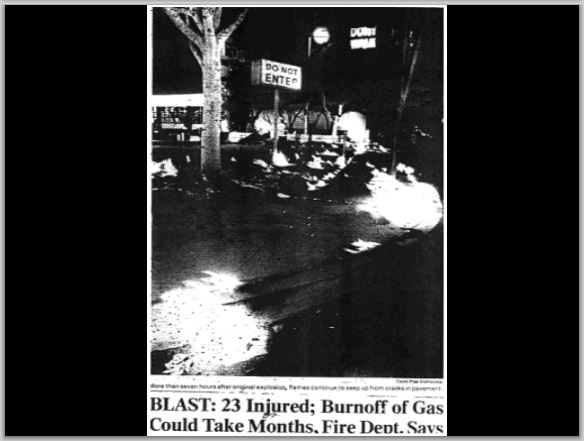
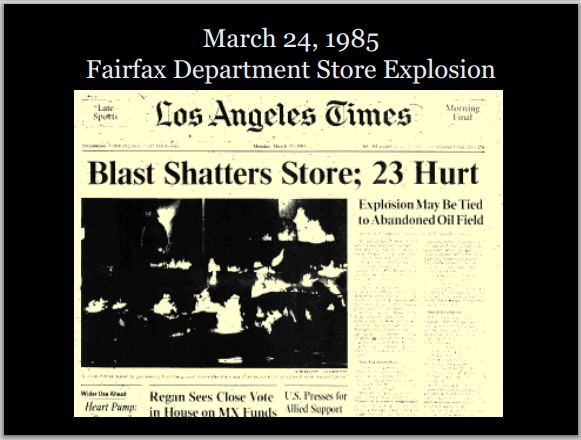
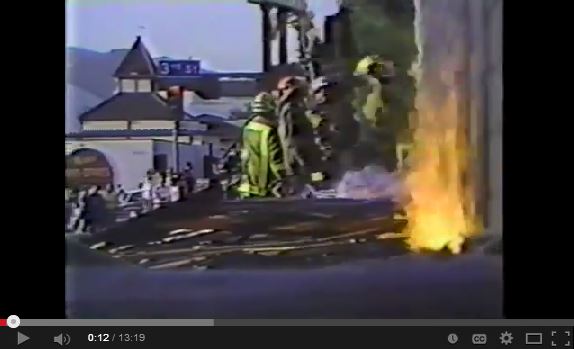
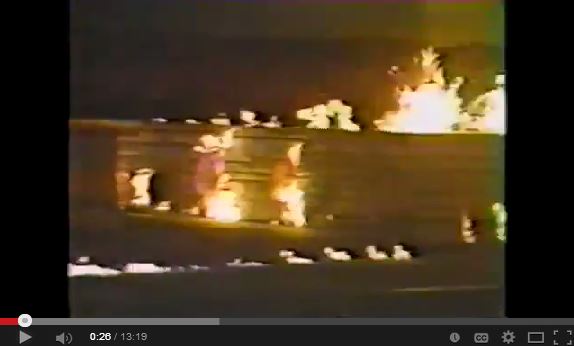
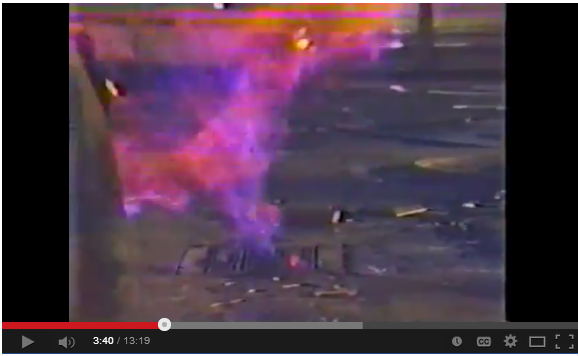
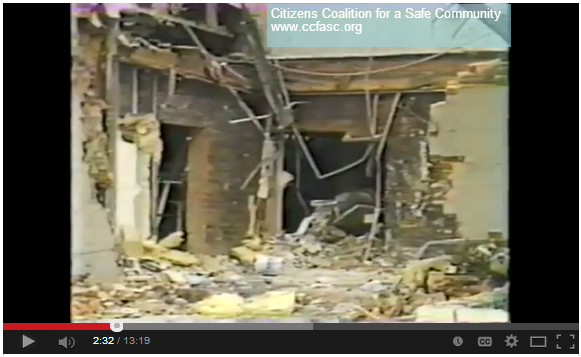







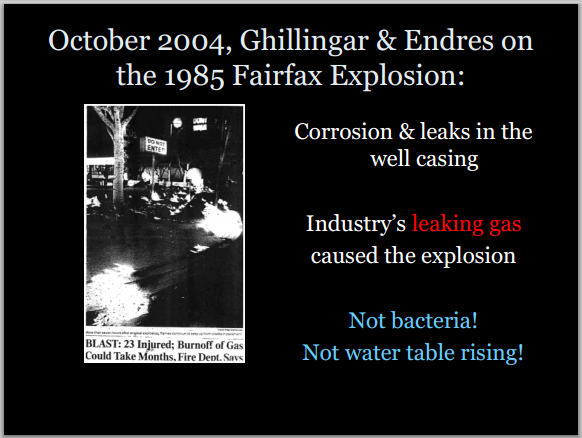
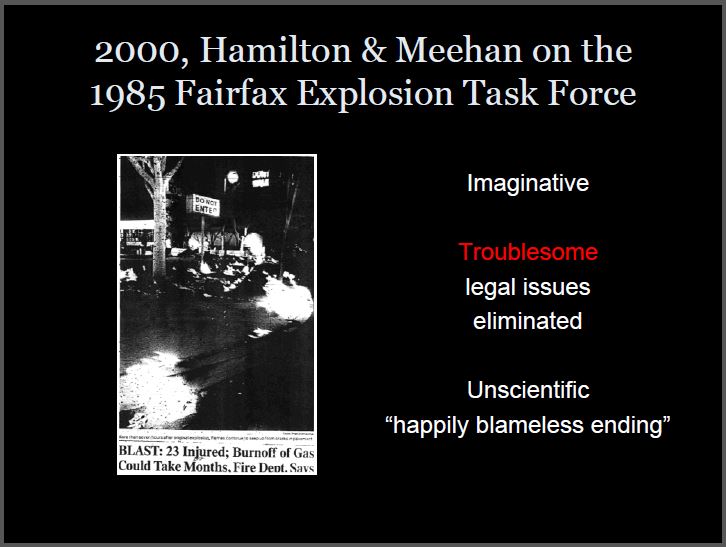
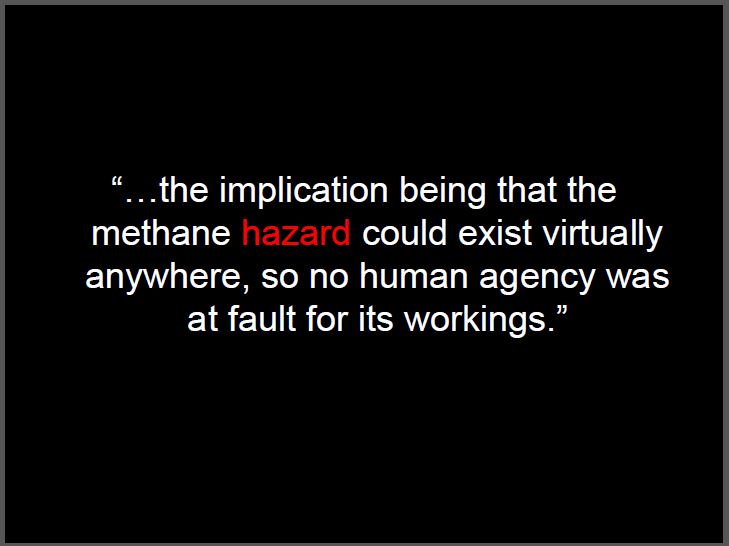
…

Industry’s leaking “natural” gas escaping via a manhole in LA
Injection Wells, The Hidden Risks of Pumping Waste Underground:
In a 2000 case that wasn’t caused by injection but brought important lessons about how fluids could move underground, hydrogeologists concluded that bacteria-polluted water migrated horizontally underground for several thousand feet in just 26 hours, contaminating a drinking water well in Walkerton, Ontario, and sickening thousands of residents. The fluids traveled 80 times as fast as the standard software model predicted was possible.
According to the model, vertical movement of underground fluids shouldn’t be possible at all, or should happen over what scientists call “geologic time”: thousands of years or longer. Yet a 2011 study in Wisconsin found that human viruses had managed to infiltrate deep aquifers, probably moving downward through layers believed to be a permanent seal.
According to a study published in April in the journal Ground Water, it’s not a matter of if fluid will move through rock layers, but when.
2001 Industry’s leaked gas in Kansas:
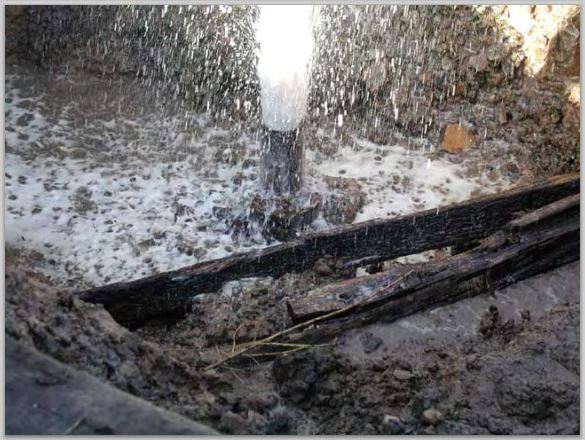
2004: Divide Creek (“Natural Gas”) Seep resulted in the Colorado Oil and Gas Conservation Commission issuing a record fine against EnCana
https://youtu.be/xgEoVqwLO5M
The COGCC staff hand-delivered a Notice of Alleged Violation (“NOAV”) to EnCana on April 23, 2004. …The NOAV cited Rule 209., failure to prevent the contamination of fresh water by gas….
2006 Spirit River, Alberta, industry’s leaking methane and ethane contaminated Bruce Jack’s water well, also initially blamed on nature by regulators: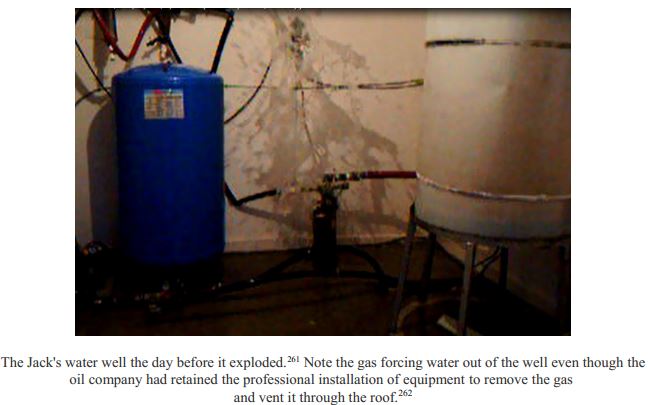
2006: Encana VP (Now Chair of the Alberta Energy Regulator) Gerard Protti, blaming nature before the gas in the Ernst water well was fingerprinted and analyzed:
The Department of Environmental Protection announced today that a U.S. Geological Survey study has found that the natural gas present in some Tioga County water wells is a chemical that matches the gas found in three storage field reservoirs next to Tioga Junction, which are owned and operated by Dominion Transmission and PP&L.
The department credited the U.S. Geological Survey’s use of an isotope chemistry technique for providing the breakthrough in determining the source of the natural gas.
“The USGS study has helped shed some light on the origins of this migrating natural gas,” DEP Regional Director Kelly Burch said. “The study points to gas from nearby storage reservoirs as the source of gas in 17 water wells along the eastern edge of the gas fields in Tioga Junction. “These findings will help us determine what actions are necessary on the part of the companies to fix the problem and prevent any future gas migration,” said Burch. “This information will also help the department determine the extent to which these companies are responsible for the contaminated water wells.”
The department will meet with Dominion and PP&L to outline the firms’ responsibilities for mitigating any health and safety concerns associated with the affected wells. The companies must also take corrective action to halt the gas migration, and inventory other water wells in the area to determine whether additional contamination problems exist that were not detected by the USGS survey.
DEP first became aware of the natural gas in local water wells as it investigated a complaint in 2001. While attempting to find the source of gas, DEP plugged four old gas wells in the area. Additionally, the department worked with the gas storage field operators to have another five gas wells plugged in the eastern part of the companies’ respective storage fields near Tioga Junction. None of these efforts resolved the gas migration problem, so DEP invested $158,000 to investigate the issue further through the USGS study that began in 2005.
“Isotope chemistry allowed us to define a characteristic ‘signature’ for carbon and hydrogen in the gases,” said Kevin Breen, a USGS hydrologist and lead author of the study. “While the gas signatures ruled out landfill gases and marsh gas of microbial origin as likely contributors, the weight of the evidence points to storage-reservoir gas as the likely origin of the gas found in Tioga Junction water wells.”
USGS inventoried 91 wells in a 50-square mile area around Tioga Junction to determine the pattern of gas occurrence. Of that group, the 39 wells found to have the highest concentration of natural gas were further tested for chemical and isotopic composition.
“While we work to shutdown the source of the gas, we encourage residents to take precautionary measures,” Burch said. [Emphasis added]
2010 11 22 Forgotten – But Not Gone
The Corpus Christi drilling company that’s struggling to cap a spewing well in Frio County said the well was abandoned years ago and wasn’t shown on any official state well maps. … VirTex said on Nov. 14 it had completed drilling a well just outside Pearsall city limits when a geyser of water and gases began spewing from an old well nearby. The white plume erupting from the well contained natural gases, including hydrogen sulfide, a toxic gas that can cause illness or death if inhaled in sufficient concentrations.
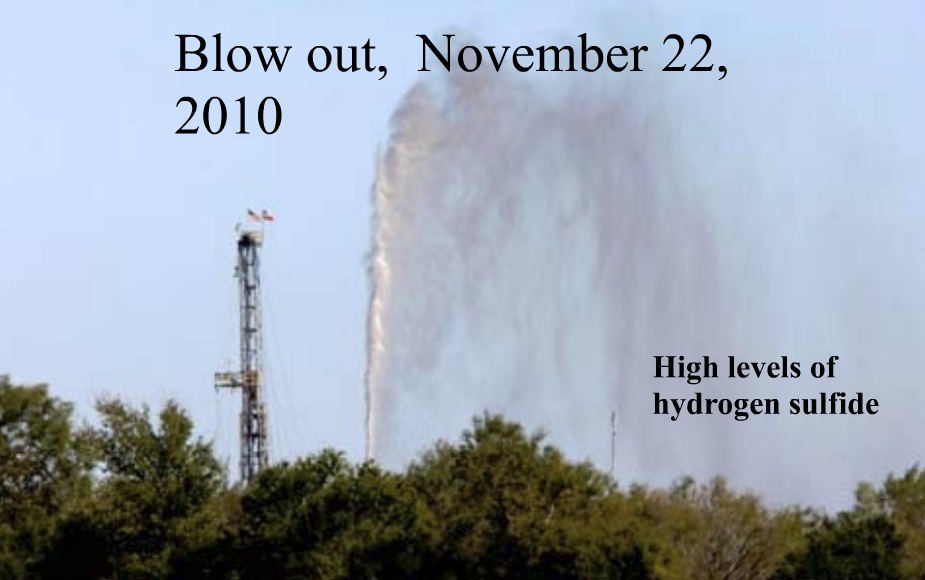
2011: 60 Minutes Australia – Fracking – The Coal Seam Gas Land Grab 13:27 min
“Something is seriously wrong.”
Above are snaps of a water well (not a gas well) after nearby fracing. There is so much gas contaminating the groundwater it ignites and spurts water out of the well, as it did the Bruce Jack contaminated water well near Spirit River, Alberta
2011: Quitman Arkansas water well gas geyser gagged and settled
Natural gas started bubbling up from shallow water wells in Quitman Arkansas. The gas was coming out in several shallow water wells as well as bubbling up in a small pond on the property.
SWN promptly denied ALL responsibility but quickly purchased the property and settled out of court with surrounding landowners and forced their silence with non disclosure agreements.
After acquiring the property SWN fenced the property from public view but setup a flair to burn the gas from the water wells which lasted several months. AOGC never pressed them or cited them for the incident and it was swept under the rug.
TURN AUDIO ON TO HEAR THE GASES ERUPTING – THEY SOUND LIKE THOSE IN THE BRUCE JACK WATER WELL
***
2012: Water Well Exploding with Methane in Franklin Twp., Pa.
***
2013 Sudden gas eruption shakes the ground near Rome’s airport
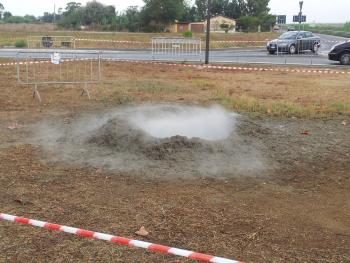
When researchers arrived at the site, they found a crater half a meter wide filled with cold water and bubbling gas. Using an infrared sensor, the team, led by Giancarlo Ciotoli of the Italian Institute for Environmental Protection and Research in Rome, analyzed the gas composition. Results showed that the gas was 95 percent carbon dioxide, with small amounts of nitrogen and methane and trace amounts of ethane and hydrogen sulfide.
At such high levels, carbon dioxide can have adverse health effects “for anyone who stops for a while in the immediate vicinity,” Ciotoli says, adding that some small dead animals were found near the site. Fortunately, he says, the vent formed far enough from houses so that people weren’t endangered by the eruption.
… “The leak of biological gas, which is stored in small subsoil pockets, generally lasts a short time, months [or] years. The existence of a deep geothermal gas implies a larger, pressurized and long-lasting source,” he says.
Ciotoli’s team surveyed the rest of Fiumicino for soil gas levels and found that similar gas vents occur in many areas throughout the municipality. Indeed, a month after the initial blowout, another vent formed just 2 meters away. Both have since been sealed by injecting concrete.
Ciotoli says that the mechanism by which the gas makes its way to the surface is unclear. But he and his colleagues suggest that an underlying regional fault system is responsible for the gas’ transport to the surface. Unlike some other faults in the region, the faults below the FGV extend deeper into the crust and thus can act as a pathway to the surface, the team reported in Geophysical Research Letters.
Citoli’s team did not examine why gas suddenly erupted exactly when and where it did at the FGV. But at least one other gas emission in the area similar to the FGV was caused by shallow drilling, says Massimo Ranaldi, a geologist at Roma Tre University in Rome who wasn’t involved in the research. That emission was produced by a gas blowout from a well that encountered an underground, pressurized gas pocket, Ranaldi says.
“Gas emissions of this kind are an important issue to study” to understand the hazard and assess the risk they pose, Ranaldi says, and to help develop techniques to avoid such accidents when drilling in risk-prone areas. It is also “scientifically interesting to understand the origin of carbon dioxide and the mechanism of its ascent toward the surface,” Ranaldi says. [Emphasis added]
2013: WATCH Risky Business – Al Jazeera’s report on Coalseam Gas [Coalbed Methane] in Australia 25 Min.
Leaking methane bubbling up river in Australia, where had not done so before fracing.
April 1, 2013 Australia Gas Leak:
2013: GAS LEAK! by Matthew Carney and Connie Agius, ABC Four Corners
VIDEO: Interview with Simone Marsh, Senior environmental specialist (Four Corners)
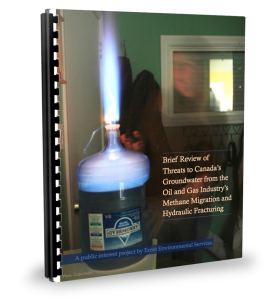

Home Sweet Home

Snap above from Ohio Department of Natural Resources Oil and Gas Well Viewer. Pink x marks 4033 Montgomery Road, location of the contaminated water well and fatal home explosion. About 35 wells are within a one mile radius of the home.


Below additional snaps of the Bankers Petroleum (Calgary-based!) mess from Shpërthejnë puset e naftës në Marinzë, evakuohen dhjetra banorë – Albanian Screen TV 3:52 Min.
…
BACK TO ONTARIO:
2010: Alberta firm eyes Ontario’s untapped shale gas by Tyler Hamilton, Toronto Star
Calgary-based Mooncor Oil & Gas Corp. wants to develop a resource in Ontario that has been largely overlooked by its rivals: shale gas. … It has already locked up nearly 23,000 acres (9.30776 hecatres) of land in Lambton and Kent counties and is preparing to spin off a separate company called DRGN Resources that will focus its efforts on both conventional and unconventional gas drilling. … What about Ontario’s own shale resources? “The question obviously comes up,” said Terry Carter, petroleum resources geologist with Ontario’s Ministry of Natural Resources. … Carter said the Marcellus zone doesn’t offer much in Ontario. “Almost all of it is beneath Lake Erie,” he said. “Kettle Point and Blue Mountain would appear to have better potential.” Both have what Carter described as biogenic gas, created when bacteria in fresh water come in contact with organic-rich bedrock. The bacteria eat the organic material and produce methane. “The natural gas is being produced in real time, just like in a landfill site,”
2015 07 08: Grey County Council voted to request Moratorium on Fracking in Ontario
THE INDIAN HILLS GOLF COURSE REOPENS
2015 07 17: golf course reopens one month after natural gas geysers out of creek
Indian Hills Golf Course has reopened one month after it was forced to close its gates due to a natural gas leak, which geysered out of a creek running through the greens on June 17.
On Friday, golf carts hummed around the greens as locals and members of the Chippewas of Kettle and Stony Point First Nation, which owns the course, had the chance to tee off for the first time.
“It’s the first major incursion we’ve ever had to contend with—and with nature at that. It’s scarier than anything,” said the First Nation’s chief, Tom Bressette.
After the 70-foot geyser of natural gas billowed out the creek, the First Nation hired Sarnia environmental consulting firm Pollutech to figure out where the gas was coming from and what was causing the leak.
The geyser was captured on video and uploaded to YouTube, where it soon racked up views and sparked discussions about what caused the sudden eruption.
Jenny Gough, Pollutech’s consulting group manager and a principal of the company, said she watched the video shortly after getting the call and initially couldn’t believe how dramatic the leak was.
“It’s pretty rare. It’s the first time I’ve seen something like it in my career,” she said. “We weren’t quite sure how to respond to it initially.”
Every time workers went into the “hot zone,” Gough said there were rescue workers standing nearby in case anything happened. The amount of gas subsided two days after the initial eruption and has since slowed to almost nothing.
Pollutech later determined the gas leak was naturally occurring and not caused by any human made source, such as a buried pipeline or sewage effluent.
However, the cause of the natural gas eruption is still a mystery. Initially, the focus was on public safety and getting the golf course back open, Gough said, rather than looking for an exact cause.
Pollutech has conducted a subsurface investigation and collected seismic data, but won’t make those details public until after a more thorough examination over the next two weeks. The next step is more invasive drilling to confirm the information revealed during initial investigation.
A naturally occurring gas leak, especially one that geysers out of the ground, is an extremely rare occurrence, experts say.
Jeff Houtby, Pollutech’s project co-ordinator in charge of the golf course leak, said it’s something that hasn’t previously occurred anywhere in Canada, to the best of his knowledge.
“Something to this scale hasn’t really been seen. To be honest, it’s quite the intriguing event,” he said. “These things don’t happen very often.”
Throughout the process, Pollutech has consulted with geologists, officials from the provincial Ministry of Environment and Ministry of Natural Resources, as well as two other environmental assessment firms, Terraprobe, Geophysics GPR International. [Cover-up team extraordinaire?]
Each of the groups have been just as surprised and intrigued as Pollutech, Houtby said.
While a small section of the greens remain closed off, Bressette said he is happy the course is open again, but is concerned about what caused the leak in the first place.
“They (the province) keep giving people permits to dig and claw at the ground with very little determination of what is underneath the bedrock as they’re drilling holes in it,” he said. “There needs to be more consideration for looking at what’s under the ground before they start putting something like a windmill on top.” [Or more importantly, where governments and enabling “regulators” allow the oil and gas industry to operate and frac and refrac and refrac]
The First Nation, and much of the surrounding Lambton Shores area, lies on top of a shale gas bed and houses a number of windmills.
Lorraine George, the First Nation’s manager, praised Pollutech’s work during the project, especially the initial air and water testing.
Since the golf course creek also runs through the First Nation, George said the regular updates, especially on water quality, were much appreciated by the community.
As a thank you, the First Nation presented Pollutech with a painting by local painter Gail Bressette, who paints under the name “Daanis.” It depicts a group of Ojibwe women standing over a body of water.
“In Ojibwe culture, it is the responsibility of the women to always speak for, pray for, and protect the water,” George explained. “Pollutech picked up on that and they were very careful and very caring.”
“They picked up on our concerns as a community and we just felt it was important to recognize that.” [Emphasis added]
2016 03 17: Indian Hills fully reopening April 15
After a natural gas leak geysering out of a creek unexpectedly washed away part of last year’s golf season, Indian Hills Golf Course in Lambton Shores is back in play.
The 18-hole course is fully reopening April 15, said general manager Ken Hoare.
It’ll be the first time the full course has been operational since natural gas burst forth last June, causing a localized state of emergency, shuttering the course for a month, and shocking the golf community and environmental experts alike.
Fractured bedrock exposed a massive cavern naturally filled with gas, leading to the one-in-a-billion occurrence, said Hoare, noting it’s “now understood and under control.
“We utilized several systems, including ground-penetrating radar, seismic testing, geotechnical investigations and drilling operations in order to understand and control the situation from ever occurring again,” he said.
“We have even installed an early warning detection system to cover the possibility of another one-in-a-billion (event).”
The leak was completely natural, officials have said. [Completely? It doesn’t sound like the officials are convinced.]
There are no gas lines in the area, and an Environmental Ministry review ruled out any man-made pollutants as a source for the methane that was leaking out of the creek.
When the golf course reopened last July, just nine holes were being teed up by the public.
At the time, course management said the closure had cost $300,000 in lost revenue.
The golf course is owned by the Kettle and Stony Point First Nation, and it was up to them to hire and pay for environmental consultants to determine the cause of the gas leak. The First Nation purchased the course in 2006 and had hoped to make it part of the reserve by 2016.
During the closure, the course was maintained with help from the Forest fire department, and the environmental consultants.
Hoare said bringing the course back moved forward with financial assistance from Kettle and Stony Point.
“At this point,” he said, “No one has stepped forward, including the insurance company, to assist in any capacity.”
Cleaning up the remainder of the course, including ruts in cart paths left by work trucks, will be complete by the opening date, Hoare said, noting members who’ve fully paid for the 2015 season will get the same membership this year at 25 per cent the cost.
All passes with 2015 expiry dates will be honoured for the 2016 season.
Lambton Shores Deputy Mayor Doug Cook had words of congratulations at the news the course was fully reopening.
“Ken Hoare and his team at Indian Hills must be proud of what they have been able to accomplish since last summer’s unfortunate event,” he said.
“I am still impressed by the professionalism shown by the first responders, technical experts and everyone involved from both Kettle Point and Lambton Shores in dealing with the emergency when it happened.” [Emphasis added]
2016 03 26: Indian Hills back in play
Indian Hills is back in play. On April 15th, Indian Hills Golf course in Lambton Shores will re-open, utilizing 18-holes, after a natural phenomenon closed them down last summer.
“Our one in a billion gas explosion is now understood and under control,” said general manager Ken Hoare.
We utilized several systems including ground penetrating radar, seismic testing, geo-technical investigations and drilling operations in order to understand and control the situation from ever occurring again. We have even installed an early warning detection system to cover the possibility of another one in a billion. On April 15th we will be officially back in play.”
On June 16th, 2015 geysers burst from the golf course’s creek causing an eruption that shocked not only the golfer industry but the environmental experts and called for a localized state of emergency in Lambton Shores, closing the course for a month. When it did re-open July 17th, only nine holes were utilized for public use. In the end the actual cause was 100% natural with a massive cavern in the bedrock that was naturally filled with gas. This parcel of land is one of the lowest points in all of Lambton County.
The golf course is owned by the Kettle and Stony Point First Nation, and it was up to them to hire and pay for environmental consultants to determine the cause of the gas leak. The First Nation purchased the course in 2006 and had hoped to make it part of the reserve by 2016.
Public safety became priority one with both the Ministry of Natural Resources and Ministry of the Environment on hand to help determine the damage and cause. The course had to be maintained during the closure and with the help of the Forest fire department and the environmental consultants, safety protocols were developed and maintained.
Union Gas determined that there were no pipelines in the area, so the leak must be coming from somewhere else.
A Ministry of Environment review of the area found no possible man-made pollutants that could be the source of the methane gas leaking out of the creek. The review ruled out the only possible source, a nearby sewage treatment plant, early on, according to Kate Jordan, a ministry spokesperson. [Why did the authorities ignore the oil and gas wells and related activities nearby, notably historic?] … [Emphasis added]
In 2015, these concerns led me to support Peter Tabuns’ private members bill to ban fracking in Ontario. Unfortunately, the bill died at committee. At the time, Ontario’s minister of natural resources and forestry said, “We won’t be going forward with a moratorium [on fracking in Ontario].” The Liberals’ reason is there are no fracking operations in Ontario at this time, a ban is premature.
But this makes no sense. The reason for a ban now is to prevent a fracking operation in the first place. Otherwise, trade agreements such as NAFTA could prevent action or require the province to pay out millions in compensation if the province implements a ban after an operation has started. [TOO LATE! OVER 3,600 WELLS HAVE BEEN FRAC’D IN ONTARIO]

